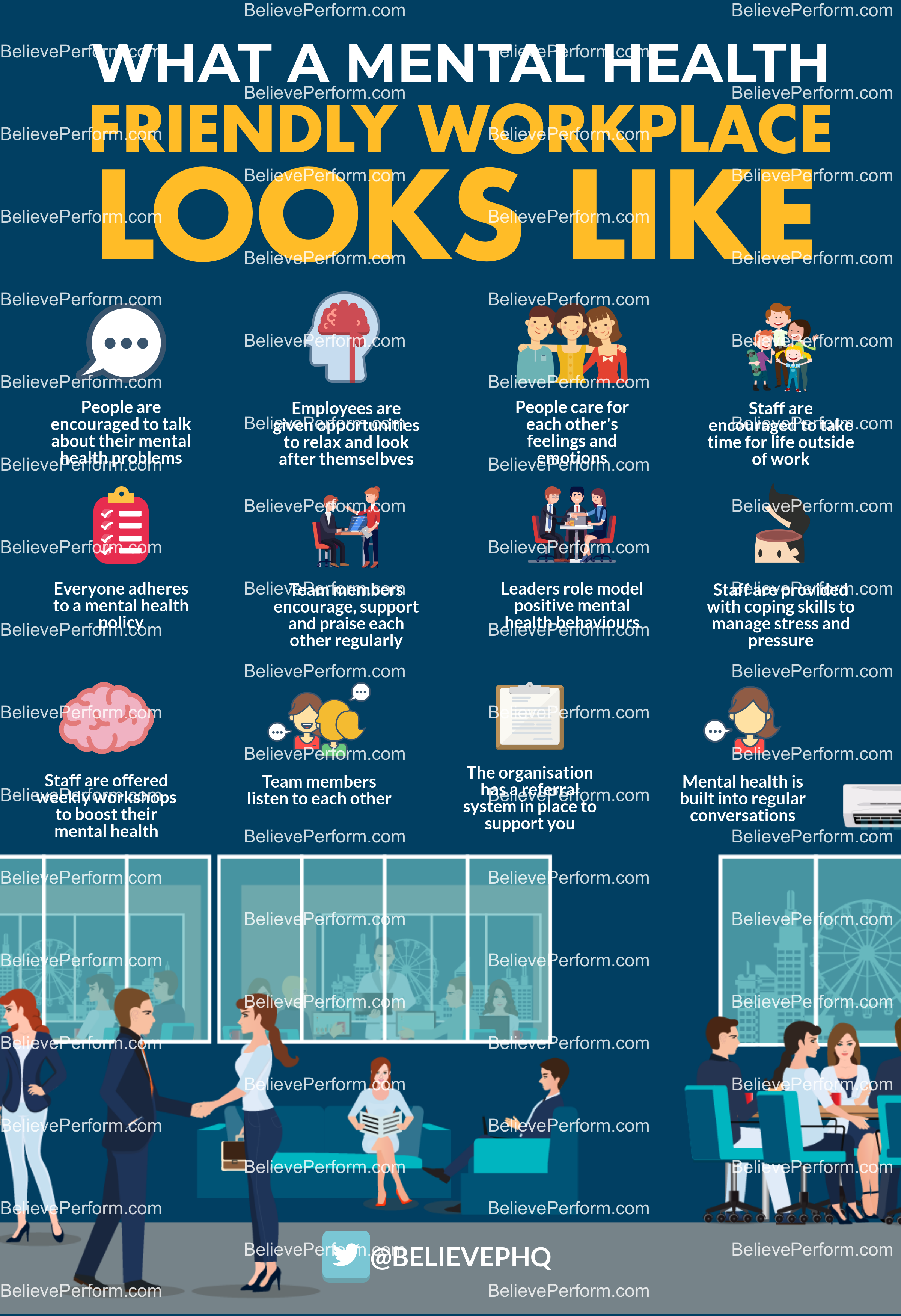Improving Productivity: Prioritizing Mental Health In Workplace Policy

Table of Contents
The Link Between Mental Health and Productivity
The correlation between employee mental health and overall workplace productivity is undeniable. Poor mental health, encompassing conditions like anxiety, depression, and burnout, significantly impacts an employee's ability to perform their job effectively. This isn't simply about taking more sick days; it's about decreased efficiency even when present at work – a phenomenon known as presenteeism.
Statistics consistently highlight the staggering cost of poor mental health in the workplace. Studies show a significant loss in productivity due to mental health issues, resulting in billions of dollars lost annually in reduced output and increased healthcare costs. This loss manifests in various ways:
- Reduced concentration and focus: Employees struggling with mental health challenges often find it difficult to maintain focus and concentration on tasks, leading to decreased output and increased errors.
- Increased errors and mistakes: Impaired cognitive function due to mental health issues can lead to a higher number of mistakes, potentially impacting project timelines and quality.
- Higher rates of absenteeism and presenteeism: Employees may take more sick days due to mental health concerns, or they may come to work while unwell, resulting in decreased productivity and potentially impacting colleagues.
- Lower employee morale and engagement: A negative impact on mental well-being significantly reduces employee morale and engagement, leading to decreased job satisfaction and increased turnover.
Creating a Supportive Workplace Culture
Creating a supportive and understanding workplace culture is paramount to fostering good mental health amongst employees. This involves establishing open communication channels and dismantling the stigma surrounding mental health issues. Employees need to feel safe and comfortable discussing their mental well-being without fear of judgment or negative consequences. Key strategies include:
- Implementing mental health training for managers and employees: Equipping managers with the skills to recognize signs of mental health challenges and respond appropriately is crucial. Training employees on mental health awareness and promoting empathy within the workforce is equally important.
- Promoting open dialogue and destigmatizing mental health issues: Regular communication campaigns, workshops, and open forums can help normalize conversations about mental health and break down barriers to seeking help.
- Offering employee assistance programs (EAPs) with readily accessible resources: Providing readily available EAPs with confidential counseling services, stress management resources, and other support services is critical. Ensure that accessing these services is easy and non-stigmatizing.
- Creating a flexible and understanding work environment: Offering flexible working arrangements, reasonable workloads, and a supportive management style can significantly reduce stress and improve employee well-being. Consider initiatives like flexible hours, remote work options, and generous leave policies.
Effective Workplace Mental Health Policies
A comprehensive workplace mental health policy is the cornerstone of a supportive environment. This policy must be more than just a document; it should be a living, breathing guide that reflects the organization's commitment to employee well-being. Key components include:
- Clear policy outlining support available for mental health concerns: The policy must clearly outline the types of support available, including access to mental health professionals, EAPs, and other resources.
- Designated mental health contact persons or departments: Identify specific individuals or departments responsible for handling mental health concerns, ensuring a clear point of contact for employees seeking help.
- Access to mental health professionals (therapists, counselors): Providing access to mental health professionals either through direct coverage or referral services is vital for ensuring employees can receive timely and appropriate care.
- Reasonable accommodations for employees with mental health conditions: The policy should outline processes for providing reasonable accommodations to employees with diagnosed mental health conditions, ensuring they can continue to perform their duties effectively.
- Stress management programs and resources (e.g., mindfulness training, wellness initiatives): Proactive measures such as mindfulness training, yoga classes, or wellness programs can help employees manage stress and improve their overall mental well-being.
Measuring the Impact of Your Workplace Mental Health Policy
Measuring the effectiveness of your workplace mental health policy is crucial to ensuring its ongoing success. Tracking key metrics allows for continuous improvement and demonstrates the return on investment in employee well-being. Consider these methods:
- Employee satisfaction surveys focusing on mental health and well-being: Regular surveys can gauge employee perceptions of the support systems in place and identify areas for improvement.
- Tracking absenteeism and presenteeism rates: Monitoring these rates can reveal the impact of the policy on employee attendance and productivity.
- Monitoring employee productivity and performance: Tracking productivity levels can help assess the overall impact of improved employee well-being on organizational performance.
- Collecting feedback on the effectiveness of implemented programs: Gathering feedback from employees on the usefulness and accessibility of implemented programs allows for refinement and improvement.
Conclusion
Implementing a comprehensive workplace mental health policy is crucial for creating a thriving and productive work environment. By fostering a supportive culture, offering accessible resources, and actively measuring the impact of initiatives, organizations can significantly improve employee well-being and, consequently, boost productivity. A proactive approach to workplace mental health is not just an ethical imperative, but a strategic investment in a successful and sustainable business.
Call to Action: Start prioritizing your employees' mental health today! Develop a robust workplace mental health policy tailored to your organization's needs. Investing in your employees' well-being is an investment in a more productive and successful future. Learn more about creating effective workplace mental health policies and improving employee well-being by exploring additional resources and best practices online.

Featured Posts
-
 Analyzing The Economic Slowdown Is Bidens Presidency To Blame
May 03, 2025
Analyzing The Economic Slowdown Is Bidens Presidency To Blame
May 03, 2025 -
 Japans Central Bank Lowers Growth Projection Due To Trade Tensions
May 03, 2025
Japans Central Bank Lowers Growth Projection Due To Trade Tensions
May 03, 2025 -
 Reform Uks Internal Strife A Detailed Look
May 03, 2025
Reform Uks Internal Strife A Detailed Look
May 03, 2025 -
 Decades Long School Desegregation Order Terminated Implications For The Future
May 03, 2025
Decades Long School Desegregation Order Terminated Implications For The Future
May 03, 2025 -
 How Nigel Farage Is Shaping Reform Uks Political Impact
May 03, 2025
How Nigel Farage Is Shaping Reform Uks Political Impact
May 03, 2025
Latest Posts
-
 Dari Sampah Menjadi Harta Petunjuk Praktis Mengolah Cangkang Telur Untuk Nutrisi
May 04, 2025
Dari Sampah Menjadi Harta Petunjuk Praktis Mengolah Cangkang Telur Untuk Nutrisi
May 04, 2025 -
 Manfaatkan Cangkang Telur Pupuk Alami Dan Sumber Kalsium Untuk Tanaman Dan Hewan
May 04, 2025
Manfaatkan Cangkang Telur Pupuk Alami Dan Sumber Kalsium Untuk Tanaman Dan Hewan
May 04, 2025 -
 Kivini Kabugu Tueketimi Faydalari Zararlari Ve Guevenli Hazirlama Teknikleri
May 04, 2025
Kivini Kabugu Tueketimi Faydalari Zararlari Ve Guevenli Hazirlama Teknikleri
May 04, 2025 -
 Daur Ulang Cangkang Telur Manfaatnya Untuk Pertumbuhan Tanaman Dan Kesehatan Hewan
May 04, 2025
Daur Ulang Cangkang Telur Manfaatnya Untuk Pertumbuhan Tanaman Dan Kesehatan Hewan
May 04, 2025 -
 Kivinin Kabugu Yenir Mi Yenmez Mi Besin Degerleri Ve Dikkat Edilmesi Gerekenler
May 04, 2025
Kivinin Kabugu Yenir Mi Yenmez Mi Besin Degerleri Ve Dikkat Edilmesi Gerekenler
May 04, 2025
